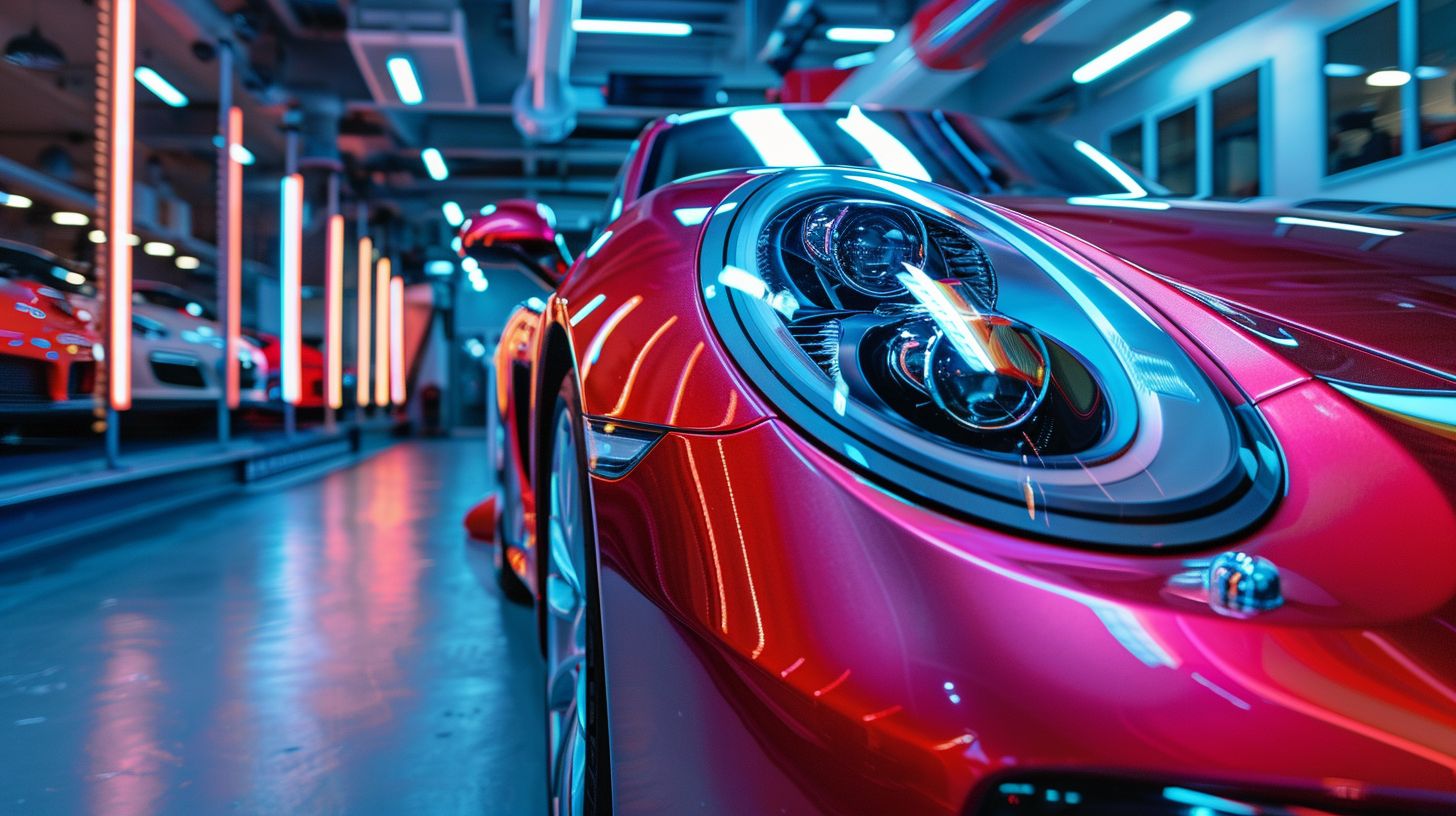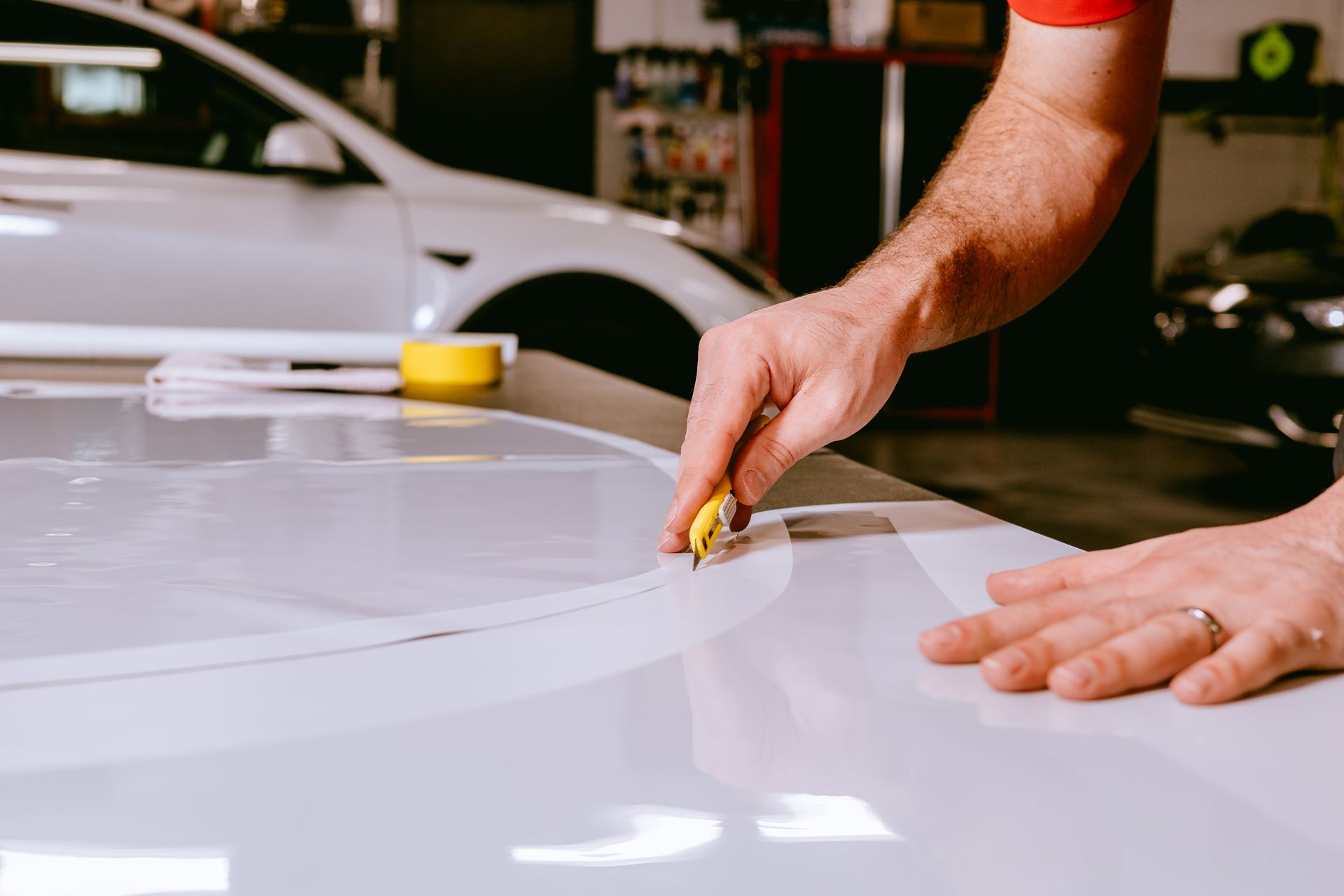Just how to Select the Right Paint Protection for Your Auto's Finish
Just how to Select the Right Paint Protection for Your Auto's Finish
Blog Article
Recognizing the Various Sorts Of Paint Protection Available for Cars
Browsing the myriad of paint protection options for vehicles can be a daunting yet important job for car proprietors intending to preserve their financial investment's appearance and worth. From the familiar routine of using conventional wax to advanced services like ceramic layers and repaint security films, each approach provides one-of-a-kind advantages and difficulties.
Conventional Wax
Traditional wax remains a prominent selection for automobile lovers seeking to safeguard their lorry's paintwork. Esteemed for its capacity to enhance the aesthetic charm of vehicle finishes, conventional car wax commonly contains all-natural active ingredients, such as carnauba wax, beeswax, and different oils. These components are mixed to create an item that supplies a deep, glossy shine, accentuating the color and depth of a vehicle's paint.
When applied, conventional wax develops a sacrificial layer that shields the paint from ecological impurities like dust, gunk, and light UV exposure. Although it does not bond chemically with the paint surface, as some modern-day choices do, the wax's safety layer works in warding off water and maintaining a clean outside. This kind of security typically needs routine reapplication to keep its efficiency, as the life-span of standard wax is commonly limited to a couple of weeks or months, depending on ecological conditions and lorry usage.
Application of standard wax is commonly uncomplicated, entailing the application with an applicator pad and buffing to a high gloss. Regardless of innovations in paint protection technology, conventional wax remains a trusted choice for those valuing traditional approaches and appearances.
Paint Sealants
In comparison to conventional wax, paint sealers offer a longer-lasting option for shielding a car's paintwork. Typically formulated from artificial substances, repaint sealers are created to offer long lasting protection versus ecological pollutants, UV rays, and small abrasions. Unlike wax, which may require constant reapplication, a high-grade paint sealant can last anywhere from six months to a year, relying on driving conditions and maintenance routines.
The application process for paint sealers is generally uncomplicated, requiring a clean, completely dry surface for optimum attachment. Once applied, sealers develop a resilient obstacle that improves the car's gloss and depth of shade, equaling the aesthetic charm supplied by wax. Significantly, the artificial nature of sealers permits them to bond better with the vehicle's surface area, creating a more enduring guard.
Moreover, paint sealers are specifically useful for auto proprietors looking for to minimize upkeep time while optimizing defense. They supply resistance to common problems such as water spots and chemical etching, making them a sensible choice for those that regularly drive in extreme weather or browse urban environments. Generally, paint sealants provide a efficient and efficient methods of maintaining a car's look and resale worth.

Ceramic Coatings
While paint sealers provide an exceptional degree of security and durability, ceramic layers represent a substantial development in automobile paint conservation. Ceramic coverings are fluid polymers related to a lorry's outside to develop a chemical bond with the existing paint (paint protection). This bond creates a protective layer that substantially enhances the car's resistance to environmental contaminants, such as UV rays, bird droppings, and acid rainfall
One of the most remarkable features of ceramic coverings is their hydrophobic properties. This top quality makes certain that water, together with dust and gunk, is successfully warded off from the surface, making the vehicle easier to clean and maintain. In addition, ceramic coatings use Learn More a high-gloss coating, enhancing the aesthetic appeal of the vehicle with a mirror-like shine.
Unlike standard waxes or sealants that might require constant reapplication, ceramic coatings can last several years with appropriate upkeep, offering long-lasting defense and value. In summary, ceramic finishes give remarkable security, convenience of maintenance, and enhanced visual allure, making them a favored choice for automobile fanatics looking for a high level of surface defense.

Paint Defense Film
Several cars and truck proprietors transform to Repaint Protection Film (PPF) as a reliable solution for maintaining their automobile's exterior. This transparent thermoplastic urethane film is thoroughly related to the painted surfaces of a vehicle, offering a durable guard versus various environmental risks. PPF masters protecting versus rock chips, minor abrasions, and the unsafe results of UV radiation, therefore maintaining the vehicle's beautiful look with time.
Among the vital benefits of PPF is its self-healing homes. Small scratches and swirl marks on the movie can vanish with direct exposure to warm, such as sunshine or warm water, making sure that the protective layer stays unobtrusive while preserving its effectiveness. This innovation not just enhances the aesthetic charm of the car yet also adds to its resale worth by minimizing wear and tear.
PPF is additionally highly customizable, allowing vehicle owners to select details areas for defense, such as the hood, fenders, mirrors, or the entire automobile. Professional installation is recommended to guarantee a seamless application and to prevent bubbles or misalignment (paint protection). On The Whole, Paint Protection Film is an outstanding investment for automobile enthusiasts, using resilient defense and satisfaction
Comparing Paint Protection Options
Auto proprietors frequently face the choice of picking one of the most suitable paint protection alternative for their automobiles. The choice typically entails examining several preferred techniques, including paint defense movie (PPF), ceramic finishings, and traditional wax. Each option supplies distinctive advantages and factors to consider, requiring a careful evaluation based on private needs and expectations.
Paint defense film, usually pertained to as the most robust option, offers a physical barrier that shields the car's surface area from chips, scrapes, and ecological impurities. In contrast, ceramic layers offer a fluid polymer that chemically bonds with the automobile's paint, offering a glossy finish and lasting protection versus UV rays, chemicals, and minor scratches (paint protection).
Standard wax, a click here for more classic alternative, supplies a more economical yet less durable type of protection. It provides a temporary shield versus contaminants and enhances the automobile's shine. Nonetheless, it demands frequent reapplication to maintain its protective characteristics.
Eventually, the decision depends upon variables such as spending plan, desired durability, and the degree of security sought, assisting cars and truck proprietors to one of the most appropriate service.
Final Thought
The diverse range of paint security find out here options offered for automobiles serves different protective requirements and budgets, each offering distinct benefits. Paint sealers supply longer-lasting synthetic defense. Paint protection film provides a robust obstacle versus physical damage.
Browsing the myriad of paint protection options for automobiles can be a daunting yet important job for auto owners intending to maintain their financial investment's look and value.While paint sealants supply a superb degree of protection and sturdiness, ceramic finishes represent a substantial development in automotive paint preservation.Numerous vehicle owners transform to Repaint Protection Film (PPF) as a reliable service for preserving their car's exterior. Generally, Paint Security Movie is an exceptional investment for vehicle enthusiasts, using long-lasting protection and tranquility of mind.
Car proprietors often face the choice of choosing the most ideal paint security option for their vehicles.
Report this page